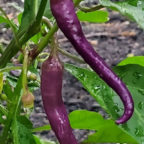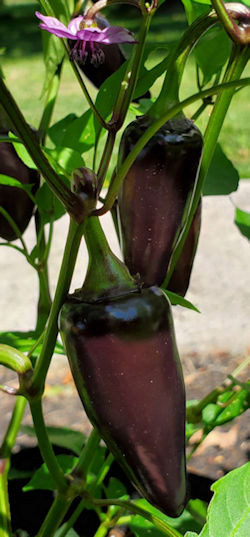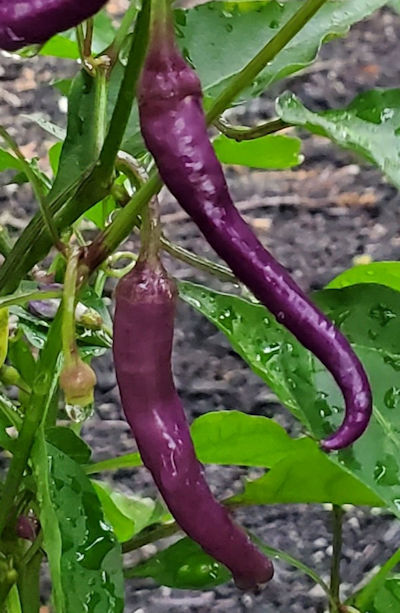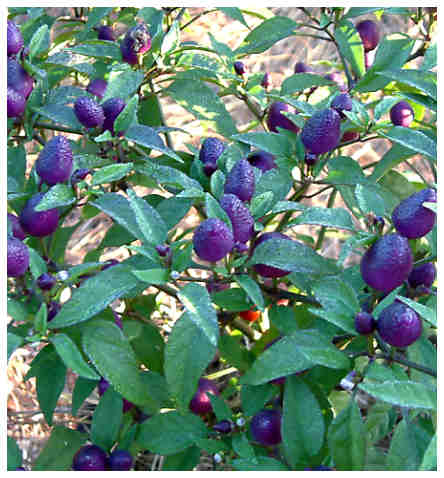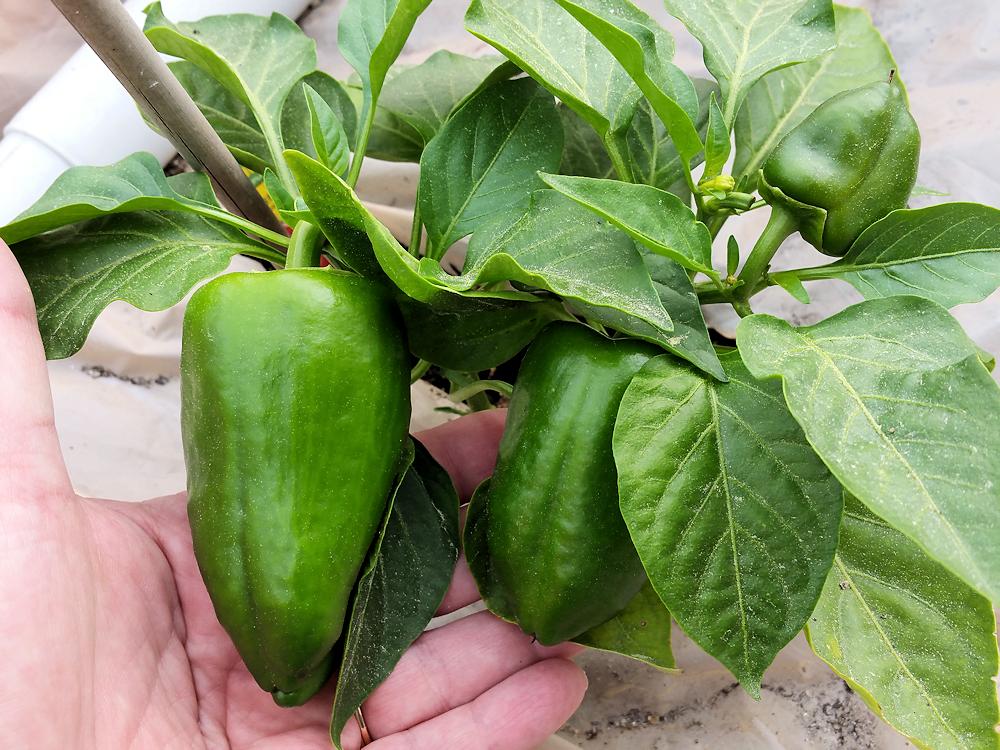Harvesting Peppers – Picking Purple Peppers
Harvesting peppers has started with a bang this Summer 2020 season. I’ve harvested a few in the past couple of weeks, but now the peppers have started growing in earnest. And picking my purple peppers looks to be next on the agenda!
Purple Jalapeno Pepper
Jalapenos are among the easiest peppers to grow (at least for me). Although I am growing two types of jalapenos this year (Purple Jalapeno and Tricked You), it’s the Purple Jalapeno chili pepper that is clearly leading the way.
It’s June 26th and I’ve picked about five jalapenos from the plant, and I think I have at least 10 more peppers waiting to be harvested. The plant is only about 20 inches tall, and it just keeps flowering and setting fruit with abandon. I am seriously glad that I only planted one of these, because it will provide a ton before the fall frosts show up.
I’m growing Purple Jalapeno in a 3-gallon fabric pot. I’m trying to remember to give my peppers a light fertilizer feeding every other week (since they are in containers) but I probably missed a week or two. In other words — no special treatment.
Purple Jalapeno is an open pollinated pepper variety. I can save seeds from one of the peppers, and I’ll get more of the same next year.
Buena Mulata Peppers
Buena Mulata is a cayenne-type chile pepper that, if possible, is even more prolific than Purple Jalapeno! The plant is only about 18 inches tall and I’ve picked about seven chili peppers so far. I easily have 15 more waiting on the plant!
I’ll pick a few more soon (just to keep the peppers coming), but I want to leave some on the plant for a bit to ripen to red. I decided to grow Buena Mulata for the chili peppers, but this variety can very easily double as an ornamental pepper plant.
Just like Purple Jalapeno, Buena Mulata is open-pollinated and is growing in a 3-gallon fabric pot. For that matter, they are actually growing side-by-side. 😀
Picking Purple Peppers
I started picking purple peppers early this month (June). To be honest, the peppers have not been very spicy yet. Why not?
Part of the reason is that it hasn’t been that warm yet here in East Tennessee. While we’ve had one or two days around 90 so far, most of the days have been in the mid 80s. We had a cool April and May, so the peppers haven’t had the opportunity to “chile up” and get spicy. But, as we get more into the hotter days of summer, the peppers will start turning their own heat up.
In addition, as they ripen to their final color (in both cases the color is red), the hotter they become.
I’ll be doing a harvest video soon, with not only these two chile pepper varieties but also some others. I’ll post the link here as soon as I have it posted.
Meanwhile, feel free to wander around the site and enjoy the info (and the peppers). See you soon!
Yellow Cayenne Pepper
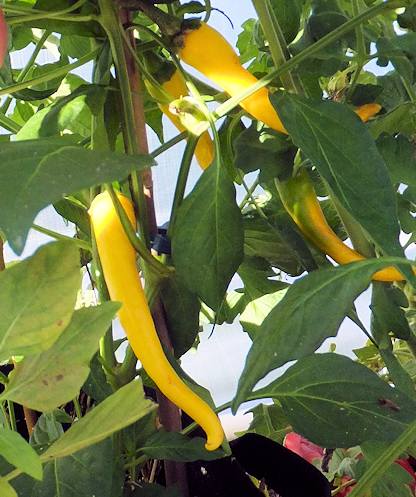 The yellow cayenne pepper is doing well in my fall garden. It’s had some setbacks, but my oh my, are there peppers! I certainly can’t complain that there aren’t enough, or that the peppers aren’t big enough.
The yellow cayenne pepper is doing well in my fall garden. It’s had some setbacks, but my oh my, are there peppers! I certainly can’t complain that there aren’t enough, or that the peppers aren’t big enough.
Yellow cayenne is shaping up to be a nice choice for the fall garden.
What a Wet September!
I planted the pepper around Labor Day 2014, and after a few nice days, the rest of the month was rain, rain…and more rain. Even though it was in the greenhouse, it was right by the door, which stayed open for ventilation. So my poor pepper got very wet. And then to make matters worse, the sunlight was hit and miss — there were days at a stretch where there was little to no direct sunlight. No wonder why the plant ended up a little on the leggy side by the end of September!
I planted the peppers in a smart pot, so the roots were able to get enough air and not end up drowning. I am not sure that the peppers would have made it had I planted in a standard plastic pot, as wet as it was.
October brought more challenges, in the form of an insect attack. While the insects didn’t bother the peppers, they did enjoy munching on the leaves (groan). I finally sprayed with some organic neem oil and the remaining leaves weren’t find of that — some of the leaves withered up. But finally, after some days of sunshine and when cooler nights started, Yellow Cayenne started looking happier. And now towards the end of October, the ripe peppers are flowing in!
Peppers Galore
Cayenne is what I would call a medium-hot pepper. Well, compared to things like habaneros, at any rate! Yellow cayenne is somewhere in the neighborhood of 40,000 Scoville units.
Cayenne Yellow bears fairly early; actually it was the earliest of my fall pepper garden. The peppers are around three to five inches long. They start off green, and stay that way for awhile — you can eat them green if you like. But, if you want them sweeter and hotter, wait until they mature to a golden yellow. And if you can, I’d recommend waiting until they turn yellow before you pick them. The green ones taste…well, green! (They are indeed hot though, even when they are green.)
Talking about golden yellow — it’s a really nice change from red peppers. Not to mention it looks great in the garden (as well as on your plate). They kind of remind me of splashes of bright sunshine.
The plant is not stingy in the least with its fruiting — it started bearing early on, and it’s happily continued bearing. One plant has kept me in plenty of chile peppers that are nice and spicy.
